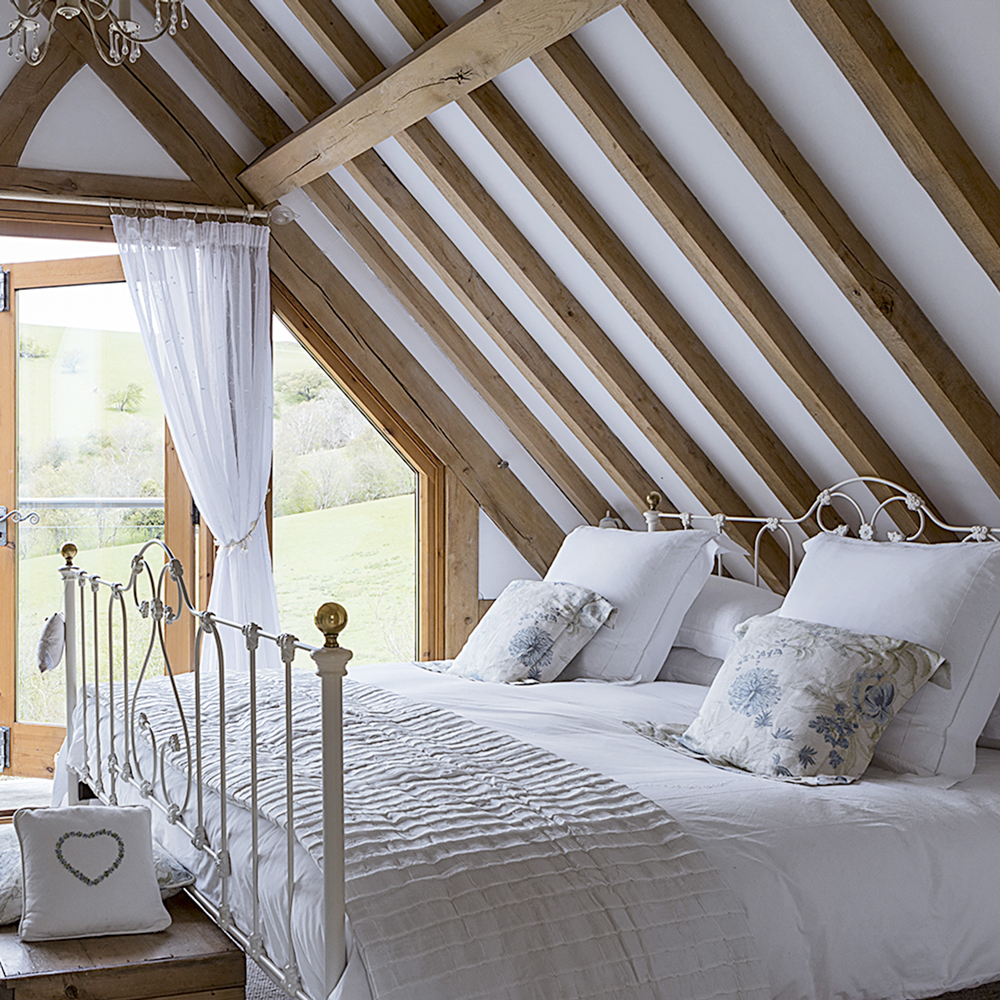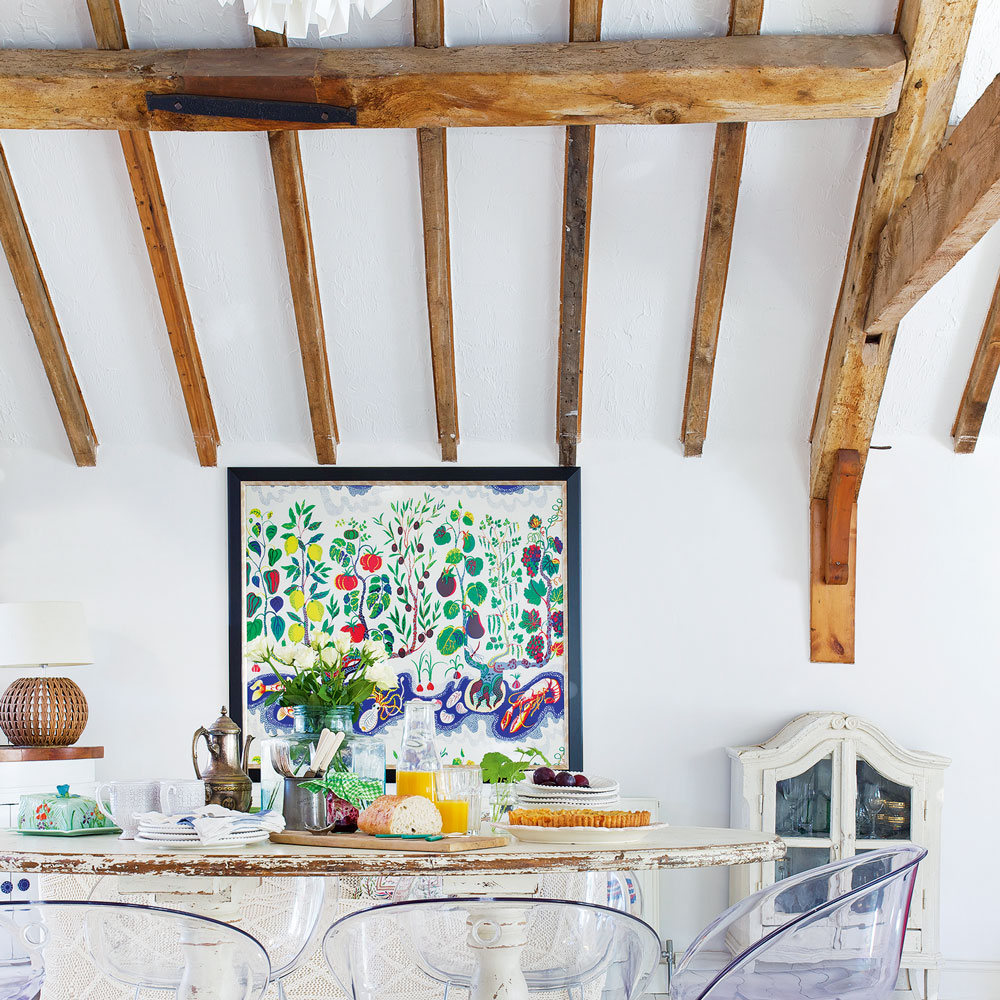What is the best way to lighten beams? Easy ways to reveal the natural beauty of wooden beams
Learn how to tackle dark beams for brighter interiors that celebrate the beauty of wood
How easy is it to lighten a wooden beam? Black-painted beams, once the finish of choice for every rustic country cottage, are now rather out of sync with our love of exposed wood grain and light-filled interiors.
Whether painted, varnished or stained there are simple DIY and decorating solutions to make beams lighter. We ask the experts how best to reveal the beauty of wooden beams...
What is the best way to lighten beams?

The most practical option may be to paint over a dark finish on beams with an appropriate coating, for instance, a pale soft distemper. This traditional water-based paint - the precursor to modern emulsion - has a velvety matt finish and the advantage that it can be washed off easily with warm water if desired in the future.
How easy is it to remove an existing finish from beams?
An alternative approach, which demands more effort, is to strip off the dark finish. It's vital not to act in haste otherwise you could unwittingly harm the timber or obliterate any traces of early underlying decoration, the presence of which isn't always obvious (particularly with plainer schemes).
Be aware that many old coatings are lead-based, be mindful you don't expose yourself or others to hazardous dust.
Are there any methods that can cause damage to beams?
Harsh paint removal methods, such as aggressive sandblasting, can ruin the surface of the beams and reveal unattractive beetle runs. Wire-brushing is inadvisable too, as is the use of any secretive process, the results of which have been known to leave beams with a phoney appearance.

Are chemical strippers suitable?
Chemical strippers are often effective for removing build-ups of black coatings, gloss paint or other oil-based finishes on beams. Always conduct a small trial first in a discreet area before carrying out paint removal wholesale.
Get the Ideal Home Newsletter
Sign up to our newsletter for style and decor inspiration, house makeovers, project advice and more.
What's to do once the beams have been stripped?
Newly exposed timbers can be treated with a beeswax and turpentine polish or micro-crystalline wax. Where timbers are badly disfigured by small shakes, nail holes and so on applying lime-wash or a liming wax is more beneficial to unify them.
Alternatively, you could use soft distemper or an appropriate eco-paint. Avoid polyurethane varnish, stains or modern gloss paints. These are are generally out of keeping with old interiors.

Where is the best place to go for advice?
If you uncover traces of anything that may be of value as you are working, stop immediately. If in doubt, contact The Society for the Protection of Ancient Buildings or your local conservation officer. Be aware with listed houses, listed building consent for such work may be needed from your local council. Check the permitted development rules to ascertain what you can and can't do without permission.
Particular thanks go to Douglas Kent, Technical and Research Director, The Society for the Protection of Ancient Buildings (SPAB).
Always consult an expert to do the job if you have any fear of tackling it yourself. Mistakes can be costly to correct.
-
 Wood drenching is the calming new twist on the colour drenching trend – here’s how to make the look work in your home
Wood drenching is the calming new twist on the colour drenching trend – here’s how to make the look work in your homeIt’s easier than ever to embrace natural materials
By Maddie Balcombe
-
 Aldi is launching a £200 day bed with four different features - its sleek design is suited to the whole family
Aldi is launching a £200 day bed with four different features - its sleek design is suited to the whole familyYou don't want to miss out on this Specialbuy
By Kezia Reynolds
-
 How to set up a drip watering system that saves water and a lot of effort
How to set up a drip watering system that saves water and a lot of effortKeep your plants hydrated (and your water bill down) with this clever garden watering solution
By Natalie Osborn